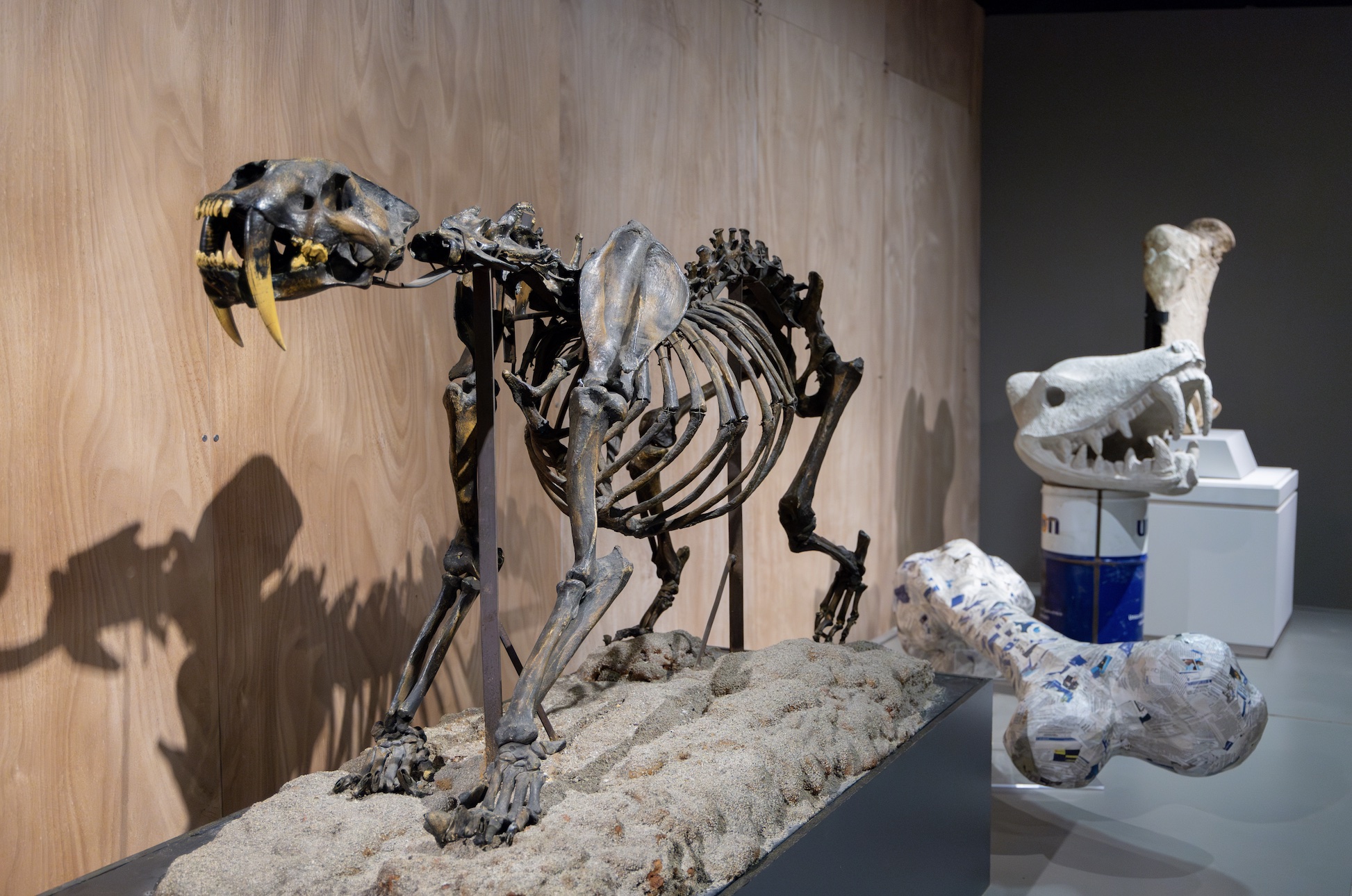
Review
Imagining the End of Times: Tales of Annihilation, Apocalypse, and Extinction
by Mariana Lagunes
At the Museo Nacional de Antropología
Reading time
6 min
The unfinished Chthulucene must collect up the trash of the Anthropocene, the exterminism of the Capitalocene, and chipping and shredding and layering like a mad gardener, make a much hotter compost pile for still possible pasts, presents, and futures.
— Donna Haraway
Thinking about the end stems from the common ground. Confronting the sixth extinction, the human condition—beyond the historical debate that didn't end during modern times—relates to what surrounds our sensitive and intelligible experience: our being-in-the-world. The exhibition Imaginar el fin de los tiempos: historias de aniquilación, apocalipsis y extinción [Imagining the End of Times: Tales of Annihilation, Apocalypse, and Extinction] invites us to traverse narratives that overflow from historical discourse and demands a vigorously dynamic genealogical reflection on what we understand as the beginning and end of humanity. The commonality in face of unbridled disaster and extinction is something latent within our 'order'–political, cultural, epistemological, and anthropological; it lies in what unites us, defines us, gives us meaning. It poses us a question: How did we end up here? What other worlds are there left to come?
The exhibition is installed at the National Museum of Anthropology, in partnership with the Käte Hamburger Center for Apocalyptic and Post-Apocalyptic Studies (CAPAS) at Heidelberg University in Germany. The space includes works from artists, collectives, and communities who craft narratives on times that profoundly destabilize the world to come, employing aesthetics with a paradigmatic imaginary. Through archeological, modern, and contemporary objects, a view of human decadence is put on display; objects that elucidate worlds that have been hidden or denied by Western and Eurocentric narratives.
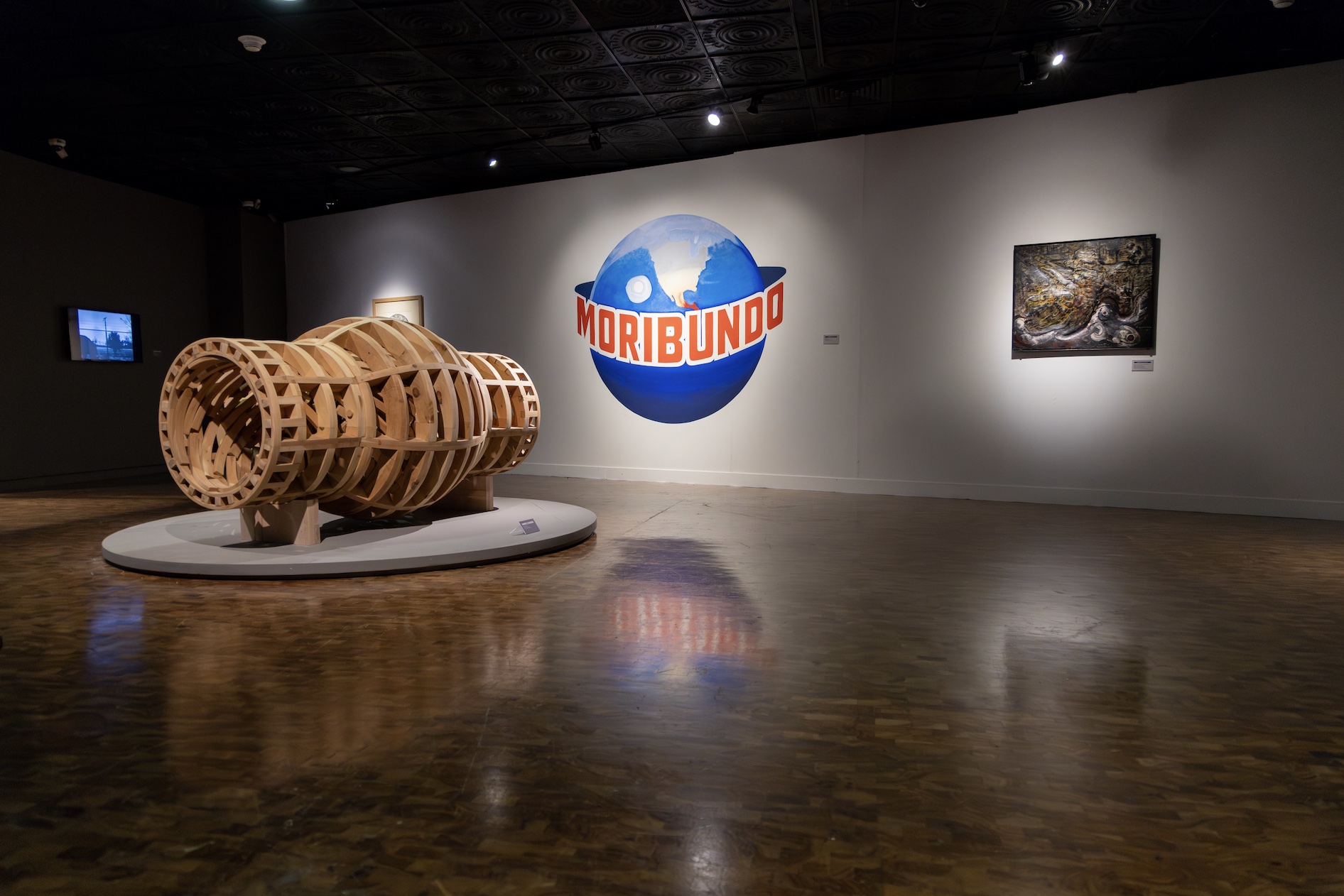
The exhibit showcases a formalization of stages developed from a local geography, of fictional and speculative projects that promote a dialogue on the engine of the Great Acceleration (which problematizes apocalyptic visions and modern narratives derived from Judeo-Christian notions that acted as a modular apparatus in the Mesoamerican populations and still tether in the Mexican context) and the Fifth extinction. The show reviews events and scenarios related to the dissolution of the pre-Hispanic world, temporality, consciousness, and post-colonial imaginaries. I will name a few of the implicated parties: the Capitalocene, the Anthropocene, and also, the Chthulucene, proposed by Donna Haraway, which asks us: How do we keep living with our problem?
I paused to look at the Escena del periodo cuaternario paleolítico superior [Scene from the Upper Paleolithic Quaternary Period] or Estudio geológico [Geological Study] by José María Velasco that also might refer to Evolución de la vida continental en el globo terrestre [The Evolution of Continental Life on the Earthly Globe;] such a fantastic way to be drawn again to fire—element of creation and discovery—to remember earlier beings who resemble me and marveled at the same phenomenon. As well as the Scene from the Upper Paleolithic Quaternary Period, which revives, beyond its dating, a vibrant inter-species ecosystem in oil on cardboard.
Every piece within this museography points at a sensitivity that transcends the profound crisis about human beings. The objects and poetic cosmogonies demand a moment of possibility that vindicates human error and failure, in a broader sense, within the range of artistic languages.
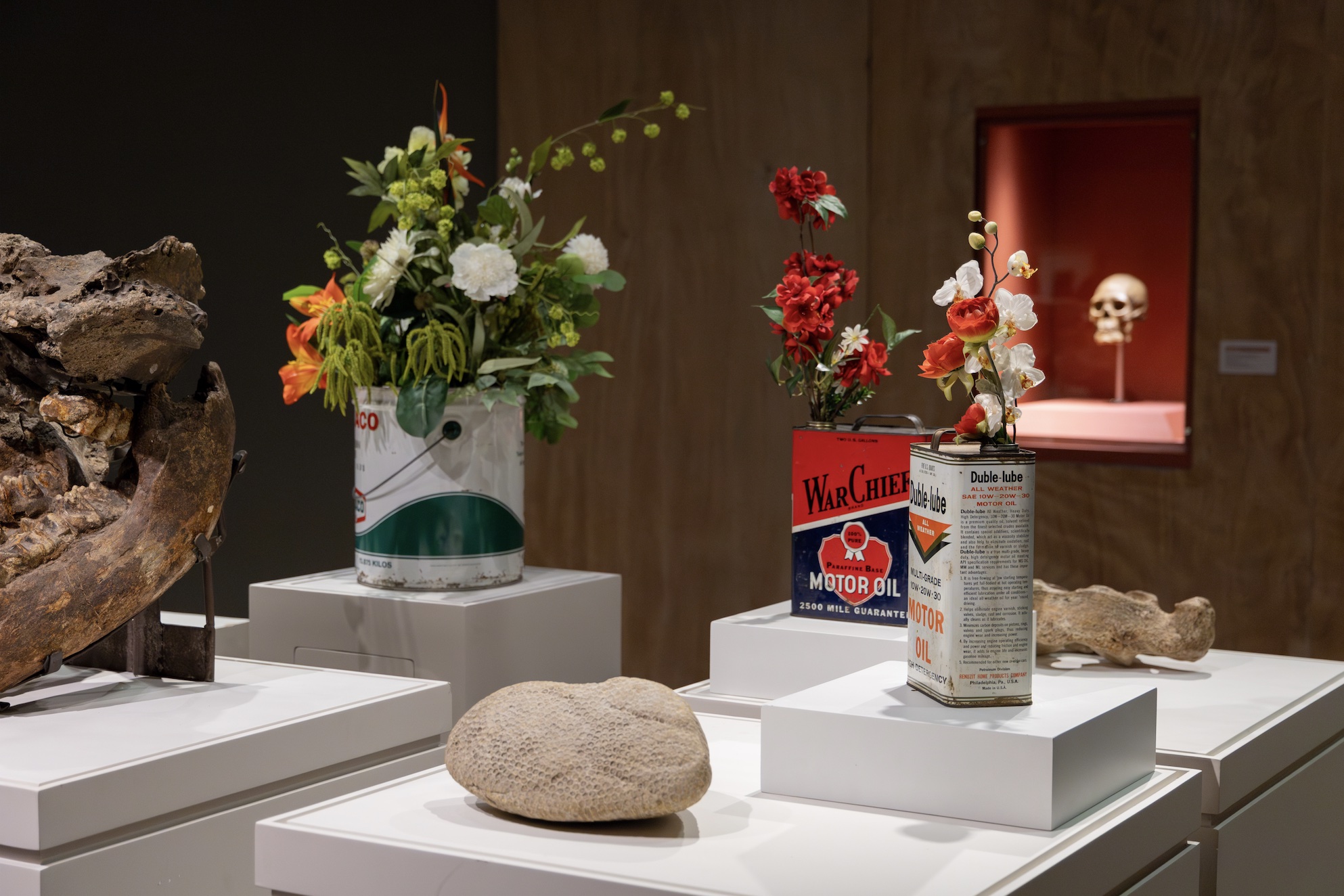
In the exhibit, the aestheticization of the end of times stems from a less historicist vision and adjusts to signs that cyclically resignify the unfolding in the world, for this it appeals to facts originating from the residue of history, as well as to an understanding about objects that enables thinking about how they emerged and what their purpose is. For instance, in Hidrocarburos [Hydrocarbons] (2007) and War Chief (2021) by Minerva Cuevas, a temporal range is established opposing fossil remains, which allows situating the idea of the Great Acceleration. At the same time, it's possible to trace, through materiality (asphalt, oil, branches, pavement) an exorbitant depletion of natural resources.
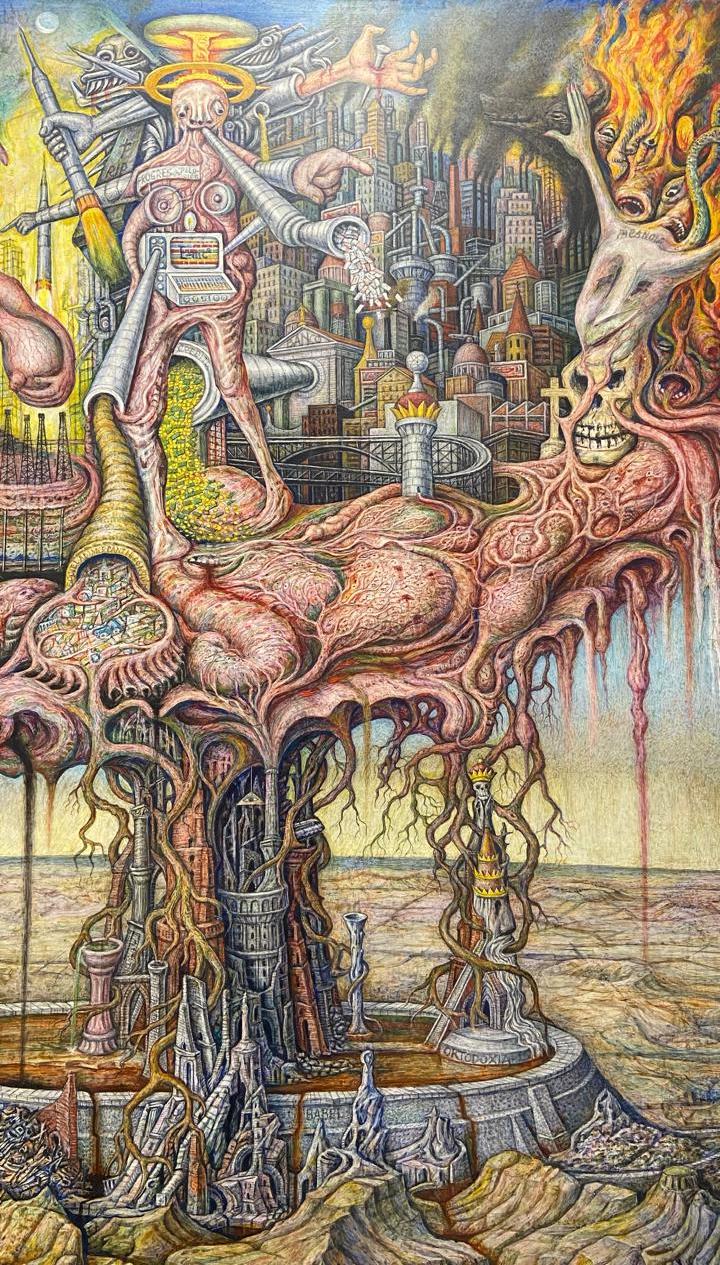
In his work, La humanidad, cáncer del mundo orgánico [Humanity, Cancer of the Organic World] (1979), Juan O' Gorman achieved a representation of the annihilation of forces activated by various anthropocentrist agents. As curator Adolfo Mantilla well mentions, "the pictorial scenario seems to aim at visualizing a space inspired by figures on extinction created and lodged in modern imaginaries that O'Gorman utilized to express a cosmological dimension." Therein, the human being endangers the world's entire ecology; a tale that even precedes the Anthropocene occurrences. We can also see in David Alfaro Siqueiros' work, Visión terrorífica de la contaminación [Terrifying vision of pollution] (1968), a series of ethical-eco-aesthetic-political relations centered on the thinking of the human and its emancipation possibilities.
During the tour, we encounter an unfolding of Florentine Codices into theatrical scenes that allude to post-colonial narratives that served as omens announcing the annihilation and catastrophe that wiped out the pre-Columbian world. These stories enable us to recognize a world created and shaped by the West, yet also unveil those other worlds that were left out of that narrative.
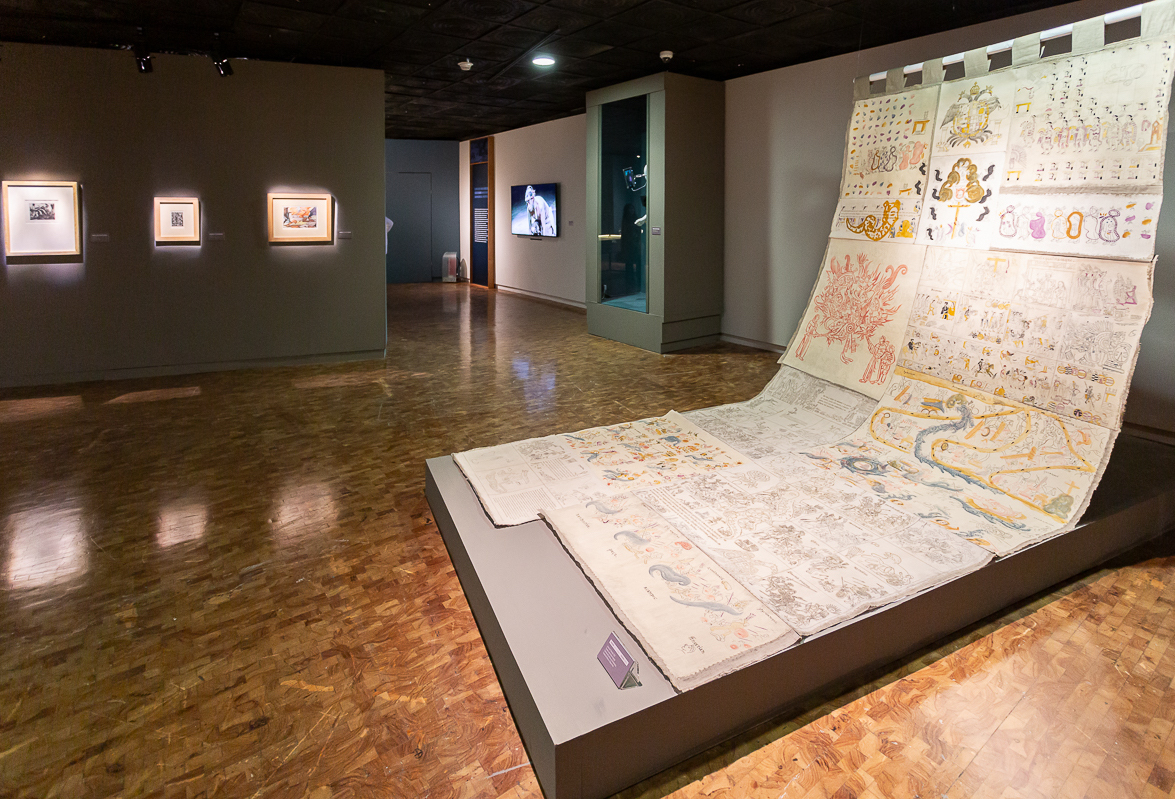
Mariana Castillo and Eduardo Abaroa's piece, starting from the research of the Lienzo de Tlaxcala [Tlaxcala Canvas;] a cosmopolitical narration affirming a new 'world' and a new 'order,' captivated my attention. In the same room, facing us, are works of José Clemente Orozco that contribute to the idea of the destruction of the ancient civilization, concerning the epistemological annihilation of a whole world vision.
With more than 150 objects on display in a profusion of allusions to the end of times, we observe that we cannot think about the Great Acceleration outside of colonialism. Through this review, it becomes clear that history has not managed to remedy and explain other narratives considering cosmogonic tales about the world. In response to this, a transdisciplinary tale is suggested, appealing to human subjectivation from the conditions of possibility of our sensitive experience.
I like the idea of thinking in common on the brink of annihilation; from environmental disaster, the ecological world, and climate change, examining what it implies to generate fossilized forms of life, remains that span various aesthetic and political dimensions where a material and sensitive resignification underlies to understand a nature not separated from us. We are part of this problem.
The exhibition ends on May 12th.
Published on April 17 2024